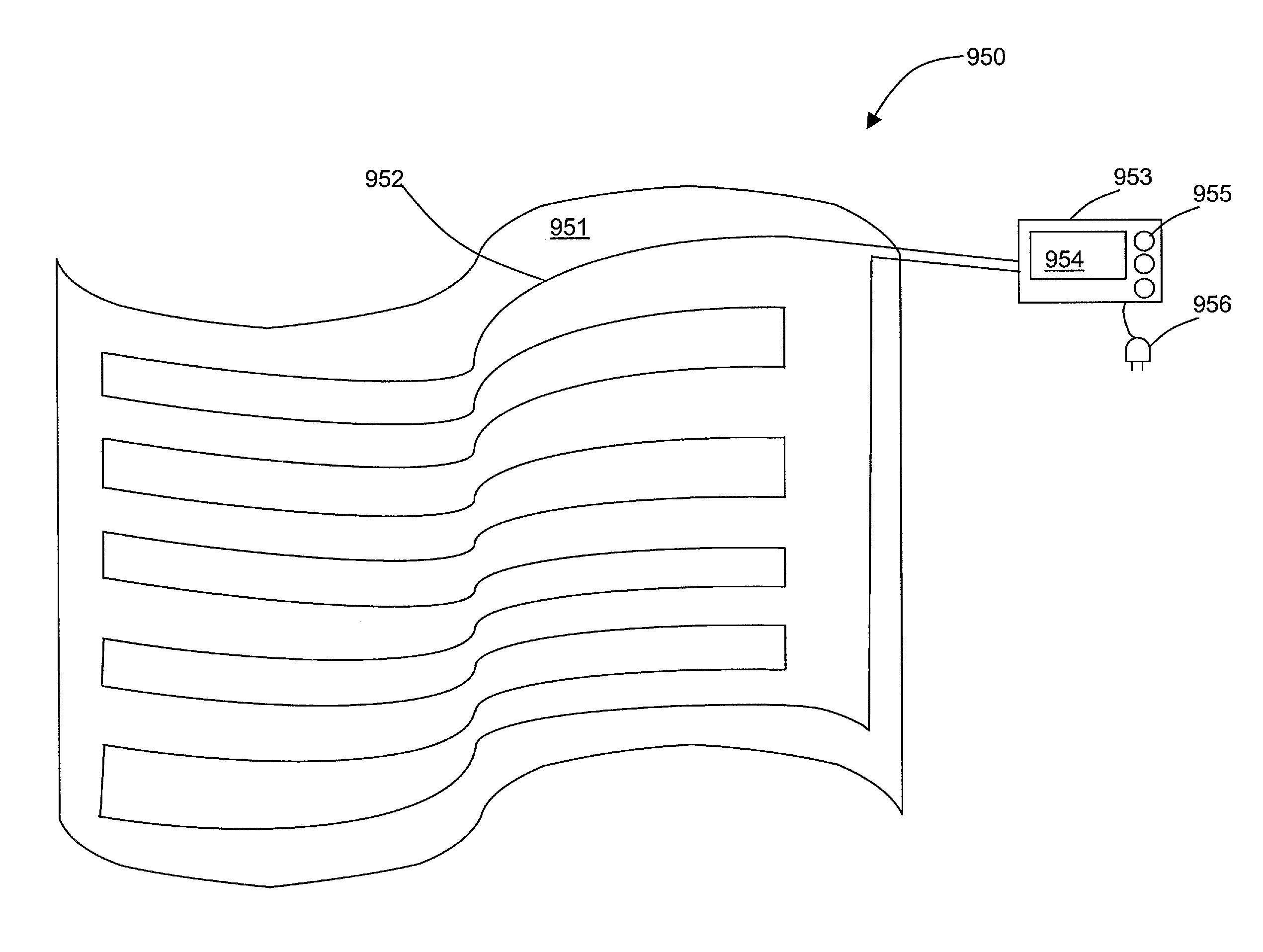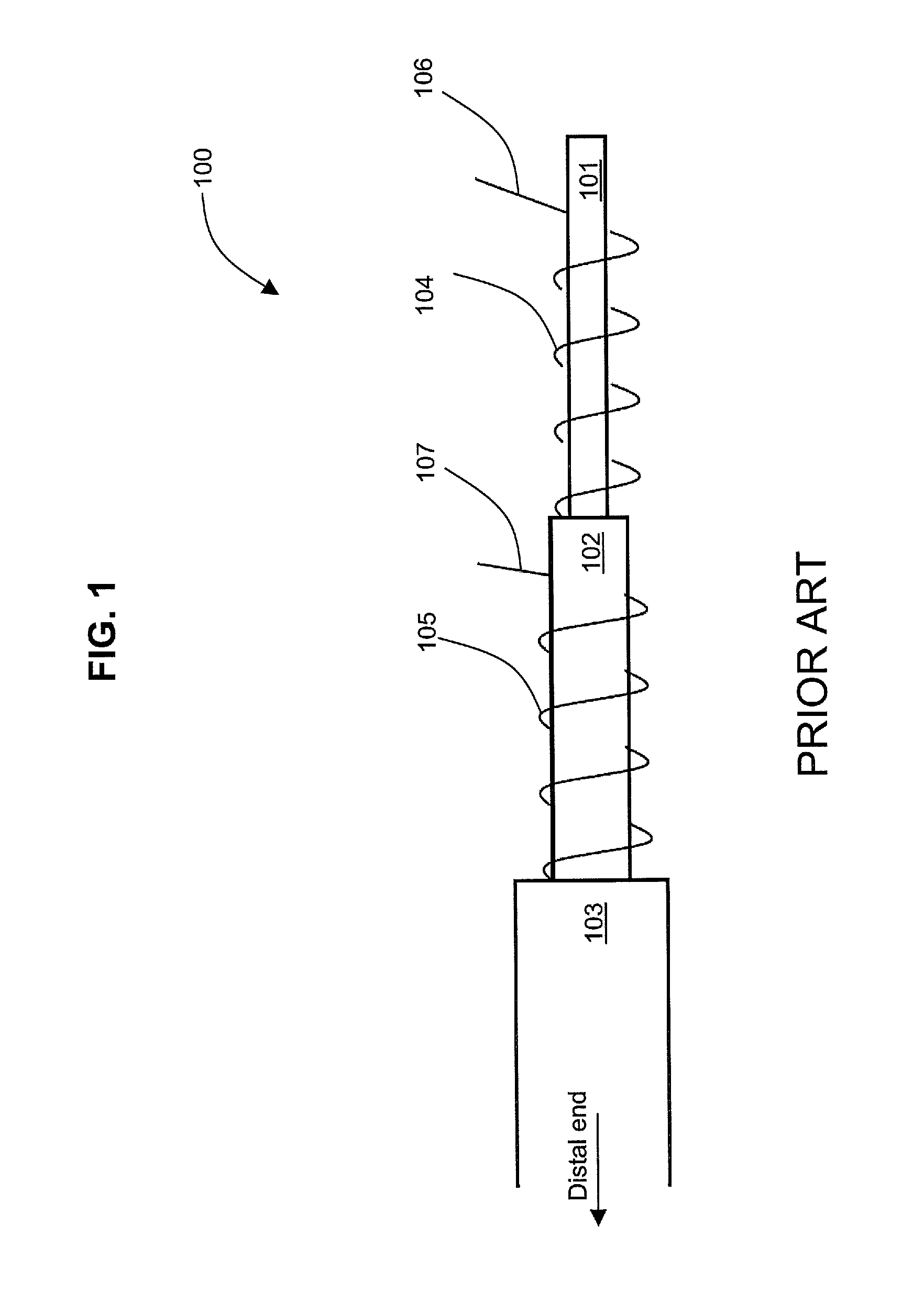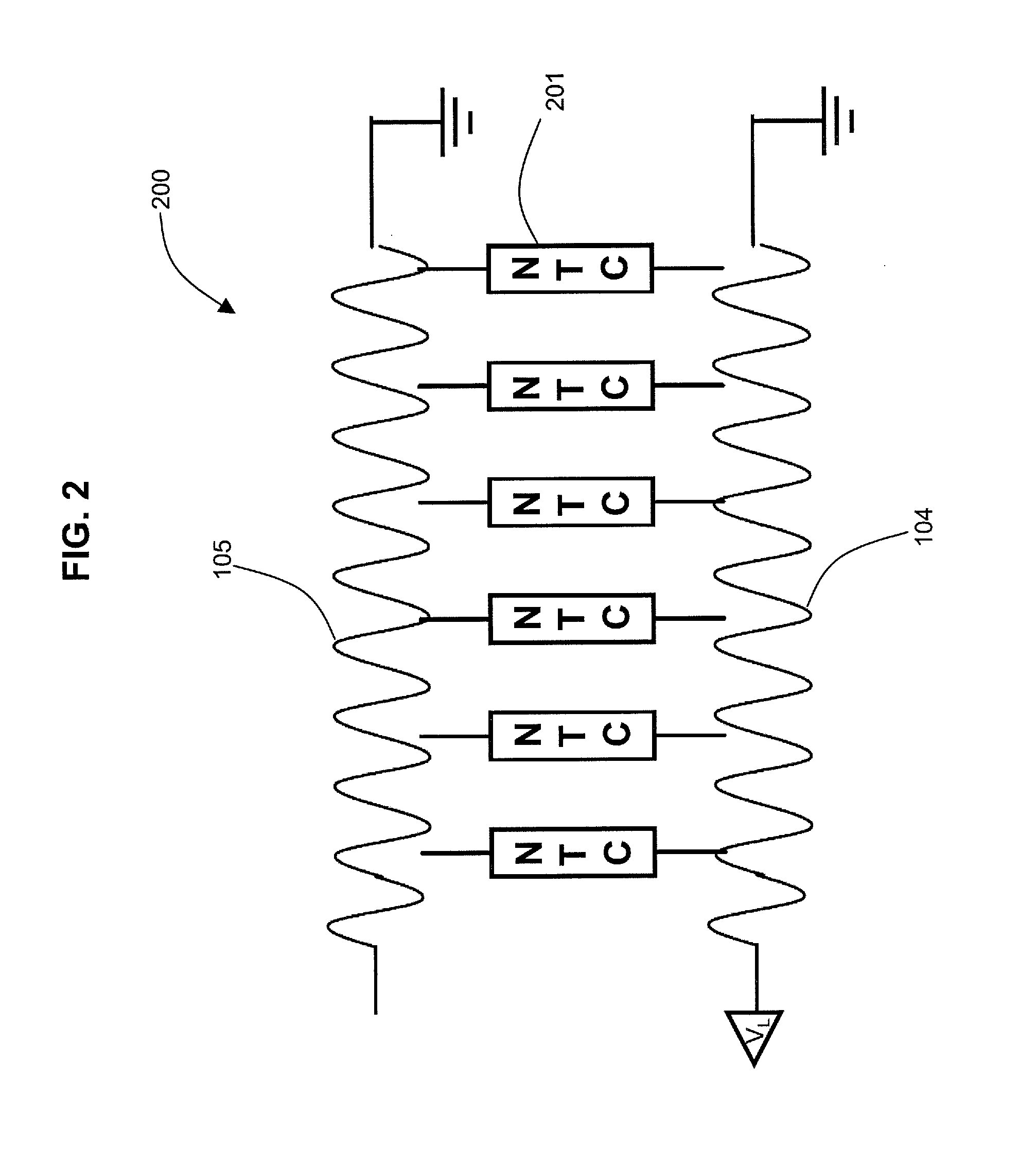NTC/PTC heating pad
a heating pad and ptc technology, applied in ohmic resistance heating, separation processes, chemistry apparatuses and processes, etc., can solve the problems of limited control, insufficient sensitivity to provide desired temperature control accuracy, and limited temperature control precision, so as to achieve positive control of the temperature of the heating pad and the effect of positive control of heat generation
- Summary
- Abstract
- Description
- Claims
- Application Information
AI Technical Summary
Benefits of technology
Problems solved by technology
Method used
Image
Examples
first embodiment
[0040]Referring now to FIG. 4, there is shown a simplified electrical diagram of a sensing circuit 300 to sense the resistance of the combination of NTC and PTC materials, and convert the resistance into electrical signals for use as feedback to a controller. Power source 305 supplies power through switch 304 to conductor 311. The resistance of the conductor 311 is represented by lumped resistors 301a, 301b (Rpm and RPTC2), but it should be understood that the resistance is distributed throughout the length of conductor 311. A first (PTC) sensing resistor 308 is connected in series with conductor 311, and the first sensing resistor 308 is connected to electrical ground. A sensing point 309 is used to measure the voltage across first sensing resistor 308.
[0041]An electrical path through resistive material 102 to return electrical conductor 312 is represented by a single lumped resistor 303, but it should be understood that the resistance of the resistive material 102 is distributed a...
second embodiment
[0047]Referring now to FIG. 5, there is shown a simplified electrical diagram of a sensing circuit 400 to sense the resistance of the combination of NTC and PTC materials, and convert the resistance into electrical signals for use as feedback to a controller. When switch 404 is in a closed position, power source 405 supplies power through switch 404 to electrical conductor 411. First (PTC) sensing resistor 408 electrically connects from conductor 411 to electrical ground. When switch 404 is in open position, current flows through resistor 421, conductor 412, resistive material 102 and resistor 422, conductor 411 and resistor 408 to ground. NTC detect sensing point 410 is used only when switch 404 is switched to an open position. The voltages at sensing point 409 when switch 404 is closed is determined in accordance with equation (5):
VPTC=VL*R3 / (R3+RPTC1+RPTC2) (5)
[0048]When switch 404 is in an open position, power source 405 no longer supplies power directly to electrical conductor...
PUM
| Property | Measurement | Unit |
|---|---|---|
| length | aaaaa | aaaaa |
| temperatures | aaaaa | aaaaa |
| temperatures | aaaaa | aaaaa |
Abstract
Description
Claims
Application Information
 Login to View More
Login to View More - R&D
- Intellectual Property
- Life Sciences
- Materials
- Tech Scout
- Unparalleled Data Quality
- Higher Quality Content
- 60% Fewer Hallucinations
Browse by: Latest US Patents, China's latest patents, Technical Efficacy Thesaurus, Application Domain, Technology Topic, Popular Technical Reports.
© 2025 PatSnap. All rights reserved.Legal|Privacy policy|Modern Slavery Act Transparency Statement|Sitemap|About US| Contact US: help@patsnap.com



